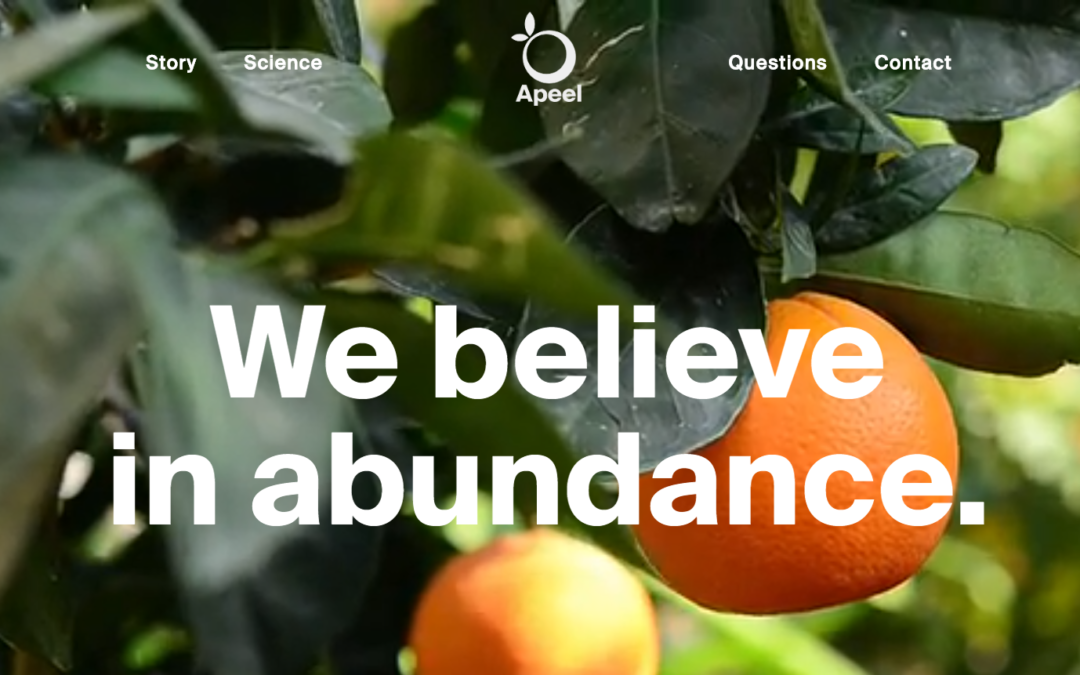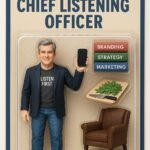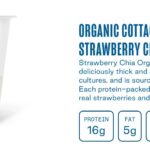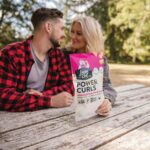James Rogers believes in abundance and Apeel.
According to food scientists, half of all food grown ends up in a landfill. That’s just wrong. Pressure is mounting to determine how to efficiently feed the world through alternatives to using more land, energy, and water to grow food.
When I learned about a company called Apeel Science and their technology, It whets my appetite to understand their approach to the market.
While working on his Ph.D. in material, Apeel Sciences Founder and CEO James Rogers will tell you he spent a few years “watching paint dry” to develop an energy-harvesting solar paint that would help democratize clean energy. Inspired by nature’s strategy for preservation, James and the Apeel Sciences team went to work building a barrier out of edible plant materials that would slow down the rate of spoilage.
His mission is to use food to preserve food
Founded in 2012, Apeel Sciences started with a grant from the Bill & Melinda Gates Foundation. Today, Apeel Sciences has developed products for dozens of USDA Organic Certified and conventional produce categories, and the company works with partners ranging from small farmers and local organic growers to the world’s largest food brands to make better quality, more sustainable produce possible.
Here is some background on Apeel from their FAQ.
What is Apeel?
A family of plant-derived coatings that fresh food growers, suppliers, and retailers use to keep produce fresh. Produce with Apeel stays fresh two to three times longer, which promotes more sustainable growing practices, better quality food, and less food waste for everyone.
For growers, suppliers, and retailers, Apeel is the only postharvest solution that creates an optimal microclimate inside of every piece of produce, which leads to extended shelf life and transportability — without requiring refrigeration, controlled atmosphere, or preservatives.
How does Apeel keep produce fresh?
Moisture inside produce and oxygen out, which dramatically slows the rate that produces spoils. By maintaining moisture and reducing oxidation, Apeel supports the plant’s natural abilities to protect against environmental stressors.
How is Apeel made?
Made of plant-derived materials — lipids and glycerolipids — that naturally exist in the peels, seeds, and pulp of all the fruits and vegetables we already eat. And yes, it is safe to eat products covered with Apeel. It is designated as by FDA as GRAS or “Generally Recognized As Safe.”
What types of fruits and vegetables are used to make Apeel?
Because the materials needed to make Apeel exist in all fruits and vegetables, it can be made from any fruit or vegetable — although some fruits and vegetables are more fruitful sources of lipids than others. The coating includes the parts of the plant that typically go unused after harvests, such as the peels and seeds.
Can Apeel Sciences products be used on USDA Certified Organic produce?
Yes. They have formulations that are OMRI Listed® for the growers and distributors of USDA Certified Organic produce. Apeel Sciences’ products help reduce post-harvest food waste, over-packaging, and costly controlled-atmosphere storage.
How are Apeel’s products applied to the surface of fresh fruits and vegetables?
The coatings can be applied in a variety of ways, including widely-used rinse or dip methods, which makes it easy to integrate into established workflows.
Are fruits and vegetables cleaned before Apeel is applied?
All fruits and vegetables that use this technology are subject to food safety laws of the United States as well as the country where the produce was grown initially.
Can I wash Apeel off?
Apeel is made of materials found in every single bite of fruit we eat and is intended to be consumed with the fruit!
What types of produce are treated with Apeel at this time?
Apeel avocados are now available at major U.S. grocery stores! But that’s just the beginning — Apeel has been proven effective at improving the quality and shelf life of more than two dozen types of fruits and vegetables. You can see what we mean by watching a time-lapse video.
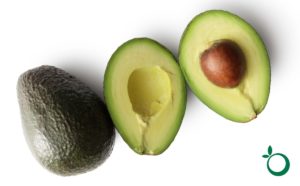
Three Marketing Lessons about Proprietary and Protected IP
- If only your company can make a claim backed by science, it gives you extraordinary market power. You have to solve a challenging problem with your technology. Who wouldn’t buy an avocado that stays fresher longer? Are you leveraging your technologies in your marketing and branding efforts? In using the Apeel brand as a technology mark, the company opens up a bigger addressable market opportunity. Apeel avocado, Apeel apple and so on.
- A simple message – we use plants to prevent fruits and vegetables from spoiling is both powerful and reassuring. It is easy to understand and digest. It is easy to communicate. Can you put your message at a sixth-grade level? Complexity doesn’t help communications efforts. Complexity restricts clarity. Does your brand name help tell your story?
- A compelling backstory can make a substantial difference in separating the wheat from the chaff. Imagine the rallying cry for the folks at Apeel. They are part of a movement to help feed the world by reducing the spoilage of food to produce abundance. Abundance is their visionary message. What James Rogers is leading isn’t a company, but a movement.
Apeel Science is a company to watch and provides ample fruit for thought.
Do you have IP that isn’t leveraged in your marketing? You can set up a time to chat with me about your marketing challenges using my calendar. Email me jeffslater@themarketingsage.com Call me. 919 720 0995. The conversation is free, and we can explore if working together makes sense. Try my new chat feature on my site if you have a quick question.
Photo credit Apeel Science. Some of the FAQ information is from their website.
